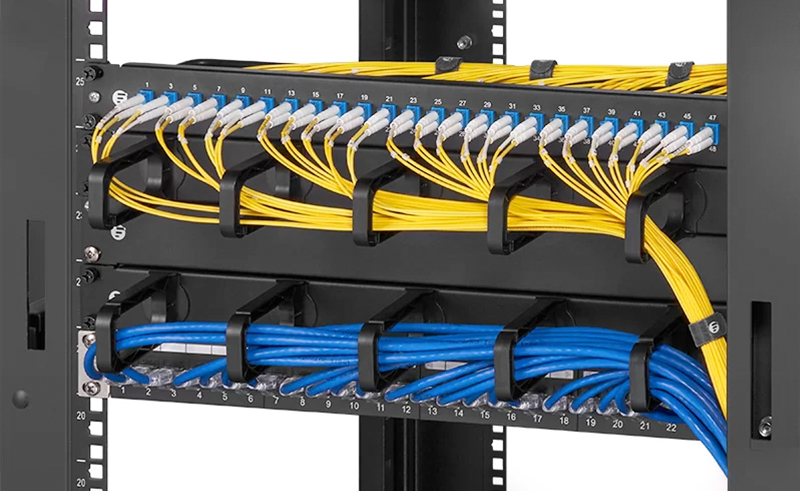How to manage cable routing

Introduction to Cable Routing Management
Cable routing management involves organizing and securing cables within your computer case or workspace to ensure a neat and functional setup. By following best practices for cable management, you can improve airflow, reduce clutter, and make it easier to identify and access components when needed.
Preparation
Before you start managing cable routing, gather the necessary tools and equipment:
- Tools and Equipment:
- Cable ties or zip ties
- Velcro cable ties or reusable cable management straps
- Cable clips or adhesive cable organizers
- Cable sleeves or wraps (optional)
- Screwdriver (for accessing PC case)
- Scissors or cable cutters (to trim excess ties)
- Workspace Setup:
- Clear a workspace near your computer or entertainment system where you can lay out cables and work comfortably.
- Ensure adequate lighting to see cable connections clearly.
- Safety Precautions:
- Power off your computer or electronic devices and unplug them from the power source before managing cables.
- Avoid pulling cables too tightly or bending them sharply to prevent damage or interference with electrical conductivity.
Step-by-Step Guide to Manage Cable Routing
Step 1: Plan Your Cable Routing Path
- Assess Components and Layout:
- Identify all components that require cable connections (motherboard, GPU, power supply, drives, etc.).
- Plan the optimal routing path for each cable to minimize visibility and maximize airflow.
- Separate Power and Data Cables:
- Keep power cables (from PSU) separate from data cables (SATA, USB, HDMI) to reduce interference and potential signal degradation.
Step 2: Organize Cables Inside the Case
- Bundle Cables Together:
- Group cables of similar types (e.g., power cables, data cables) using cable ties or Velcro straps. Avoid over-tightening to allow for future adjustments.
- Route Cables Neatly:
- Route cables along designated cable management channels or tie-down points inside the case. Many modern cases have built-in channels or routing holes for this purpose.
- Use Cable Clips or Adhesive Organizers:
- Secure cables to the case using adhesive-backed cable clips or organizers. Place them strategically to hold cables in place and prevent them from sagging or interfering with fans or components.
- Consider Cable Sleeves or Wraps:
- Use cable sleeves or wraps to bundle and conceal multiple cables together. This can create a cleaner appearance and reduce tangling.
Step 3: Manage External Cables
- Secure External Cables:
- Use cable clips or adhesive organizers to secure external cables (monitor cables, peripherals) along the back of desks or walls. This prevents them from dangling or tangling.
- Label Cables (Optional):
- Label cables at both ends (using cable tags or tape) to easily identify connections and troubleshoot issues in the future.
Step 4: Test and Adjust
- Ensure Proper Connections:
- Double-check all cable connections to ensure they are securely plugged into their respective ports without strain or tension.
- Test System Functionality:
- Power on your computer or electronic devices to ensure all components are operational. Monitor temperatures and airflow to verify that cable management has not obstructed airflow.
Step 5: Maintenance and Upkeep
- Regular Inspection:
- Periodically inspect cable routing to ensure cables remain secure and organized. Make adjustments as needed after hardware upgrades or changes.
- Dust Management:
- Use compressed air or a soft brush to clean dust buildup around cables and components. Regular cleaning prevents airflow obstruction and maintains optimal system performance.
Common Cable Management Tips:
- Avoid Overstuffing: Leave some slack in cables to accommodate component movement or upgrades.
- Use Reusable Ties: Velcro cable ties or reusable straps allow for easy adjustments and additions.
- Keep Cables Labeled: Labeling cables can save time during troubleshooting or upgrades.
- Be Patient: Take your time to route cables neatly to achieve a professional-looking setup.
Conclusion
Effective cable routing management is essential for maintaining a clean, organized, and functional computer or entertainment setup. By following this step-by-step guide and utilizing appropriate tools and techniques, you can achieve improved aesthetics, better airflow, and easier maintenance for your system.
Always refer to specific instructions provided by your case manufacturer or electronic device manuals for optimal cable management practices tailored to your setup.




